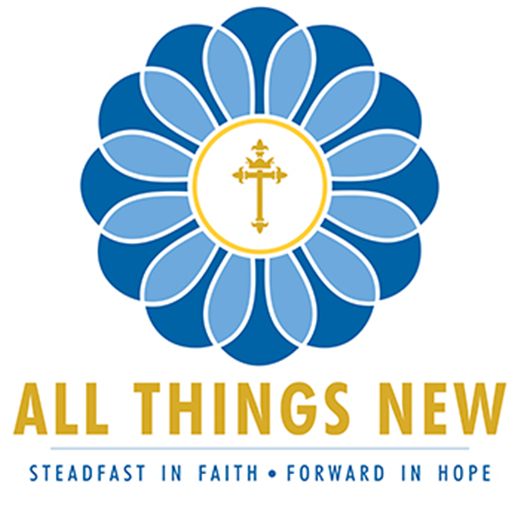There’s Nothing New Under the Sun: How to Think about “All Things New”

February 17, 2023
The St. Louis Catholic scene is in a volatile moment as it seeks to process the proposed changes in “All Things New,” the local archdiocesan response to the global Catholic Church’s Synod on Synodality. Relatively speaking, many of these changes really do seem quite new to STL Catholics and American Catholics generally: downsizing in parishes, fluid pastorates, and more. But some of this anxiety might be eased if we think back–far back–to how we got the diocesan and parochial systems to begin with, which were themselves a fairly serious change in how early Christian communities were organized.
Scholars generally agree on a handful of facts about the emergence of early Christianity. Jesus and his apostles were Jews, and their movement constituted a new sect of Judaism, one that was still participant in the local synagogue and distinguished by small groups meeting in the homes of wealthy members for meals. The eucharist of the first two centuries was a full evening meal, held probably on Saturday night at the conclusion of the Sabbath and the liturgical beginning of the day on Sunday. The host of the meal was the liturgical president of the proceedings, the “overseer” (episkopos in Greek, which we usually translate “bishop”), responsible for collecting and distributing food and money to the poor members gathered for the meal with the help of his assistants (diakonoi). By this time, the ordinary Greco-Roman city (polis) was a huge entity, and Christians were by contrast a very small community, so multiple house churches would be spread across a city, each with their own episkopos. When these individuals met together to discuss how things were going and strategize about common problems, they addressed one another as “elder” (presbyteros, where we get our words presbyter and priest). In general, their main job was the liturgy: the actual instruction and preaching of their congregants belonged to local teachers (didaskaloi) and itinerant prophets that communities would host. It is unclear what, how, and how much scripture was read or commented on at these meals, and it is much more likely that whatever discourse was going on around them was collaborative and dialogical than strictly homiletical.
In the early third century, Christians were beginning to become a much more populous segment of the empire, and things began to change drastically in terms of how their communities were organized. The liturgical meal was truncated to a token of its previous iteration–isolating the eucharistic bread and wine and parceling them out for large crowds–and was moved to Sunday morning, prefaced by a service of scripture readings and commentary and more elaborate ritual. Where previously each individual episkopos freestyled his anaphora–the prayer of the eucharist–prescribed forms of the prayer began to be expected of episkopoi. A new type of episkopos also emerged, the monepiskopos, overseeing more than one individual household community. By 250 CE, in the cities of Alexandria, Egypt and Rome, a single monepiskopos laid claim to leadership of the entire city, and in both the leaders of household communities were now referred to exclusively by their collegial title of “elder” (remember, presbyteros, “presbyter” or “priest”). 75 years later, at the Council of Nicaea in 325, every large metropolitan center in the Roman Empire would have its own singular bishop, ruling a diocese (originally a term for the Roman administration of local provinces) in which his priests and deacons served the liturgy locally at individual centers (paroikiai, which is where we get “parish”). As Christianity became the official religion of the Roman Empire, the systems of bishop-priest-deacon and diocese-parish in this particular form survived and continued to evolve because they were administratively convenient for both church and state.
The Christians who lived through these changes were not always happy about them: they constituted a rupture with the way of Christian life they were familiar with, imposed from above by authorities they did not always know or trust very well. Yet this evolution of Christianity is part of what made it a resilient and organized force in the middle ages, capable of spreading as far east as Western China and as far west as the British Isles. Christianity’s historic genius is its capacity to save its substance while changing its outward form, which it has done numerous times in its history.
In that sense, while the Archdiocese seeks to make “All Things New,” not always to the liking of its congregants, thinking back on our Christian history will remind us that, in fact, “there is nothing new under the sun” (Eccl 1:9). We’ve changed before, and can again.